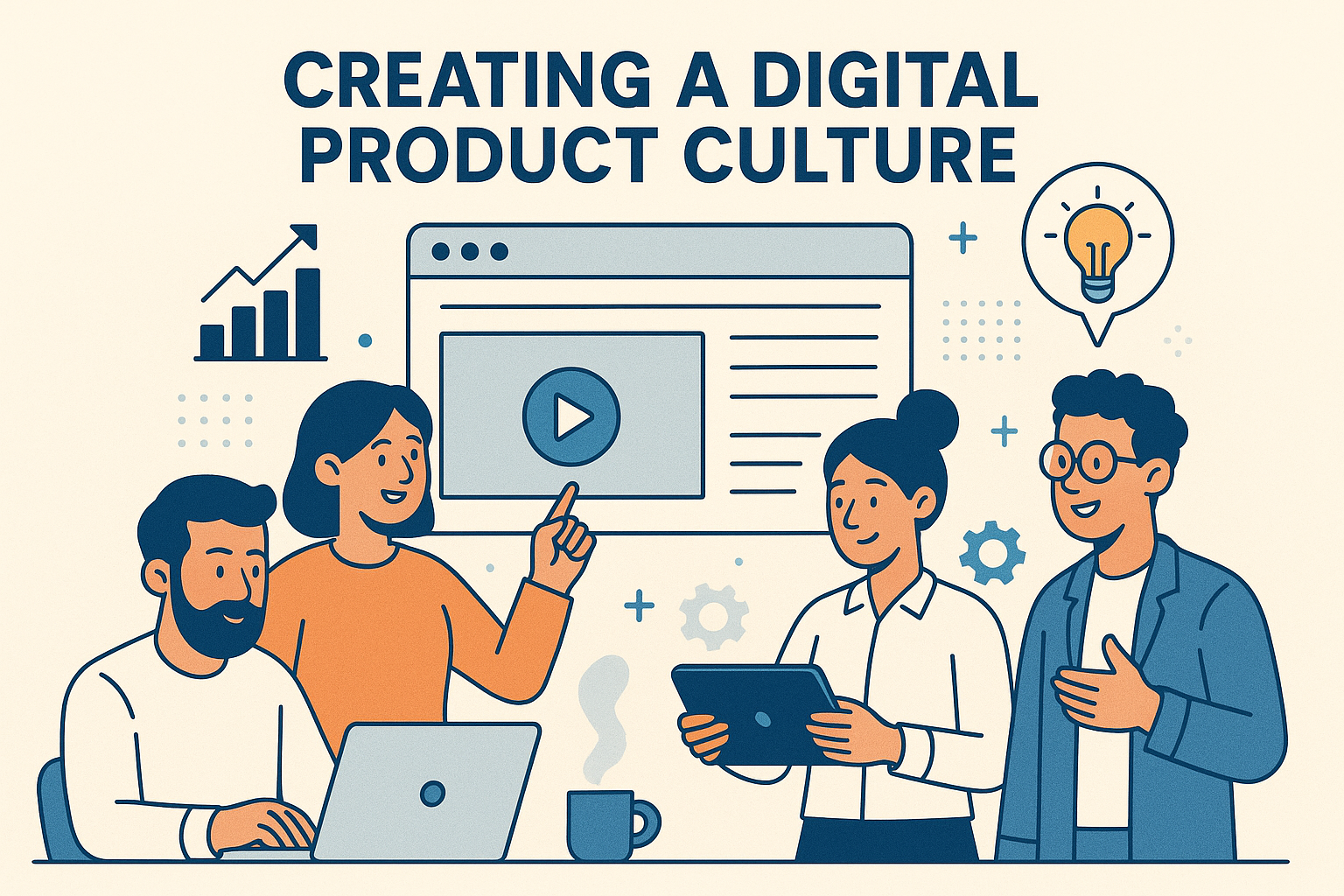From Projects to Products: Rewiring Mindsets for Digital Continuity
What Is a Digital Product Culture
A digital product culture shifts the enterprise focus from short-term projects to long-term products. Instead of delivering one-off initiatives, teams continuously evolve digital offerings based on customer needs and market dynamics.
Key Shift: From ―Did we finish the project?‖ → ―Is the product creating sustained value?‖
Why It Matters
Customer-Centricity: Products are tied to user outcomes, not deadlines
Agility: Continuous delivery encourages faster feedback loops
Innovation: A product mindset fosters ownership and cross-functional thinking
Resilience: Long-term product thinking resists disruption and supports adaptability
Cultural Markers of Product-Driven Organization
Empowered Teams
Autonomous, cross-functional squads own the entire product lifecycle
Outcomes Over Outputs
Success is defined by KPIs like adoption, retention, or NPS—not just features delivered
Shared Vision
Clear product roadmaps align engineering, design, marketing, and business
Data-Led Decisions
Product enhancements are driven by usage analytics and experimentation
Moving From Project to Product
| Project Mindset | Product Mindset |
| Fixed scope, timeline | Evolving scope, continuous delivery |
| Temporary team | Persistent, dedicated product teams |
| Success = on time/on budget | Success = user value + business impact |
| Funded by phase | Funded like a business unit |
How to Build the Culture
Executive Buy-In: Leadership must champion a shift from outputs to outcomes
Structure Around Products: Align org charts to reflect digital product ownership
Invest in Product Management: Train PMs to balance UX, tech, and business needs
Measure What Matters: Track engagement, satisfaction, and business KPIs
Celebrate Learning: Reward experimentation and customer feedback loops
Conclusion
A digital product culture is foundational for true digital transformation. It shifts the enterprise mindset from delivering IT solutions to building lasting, evolving digital experiences— anchored in user needs, strategic growth, and rapid learning.





